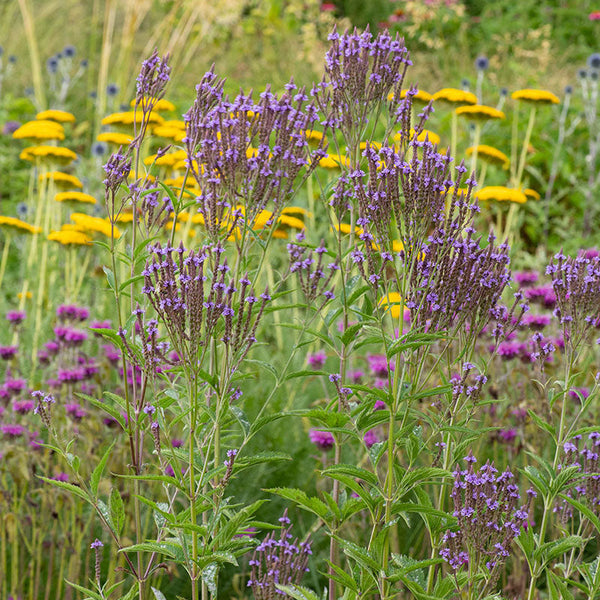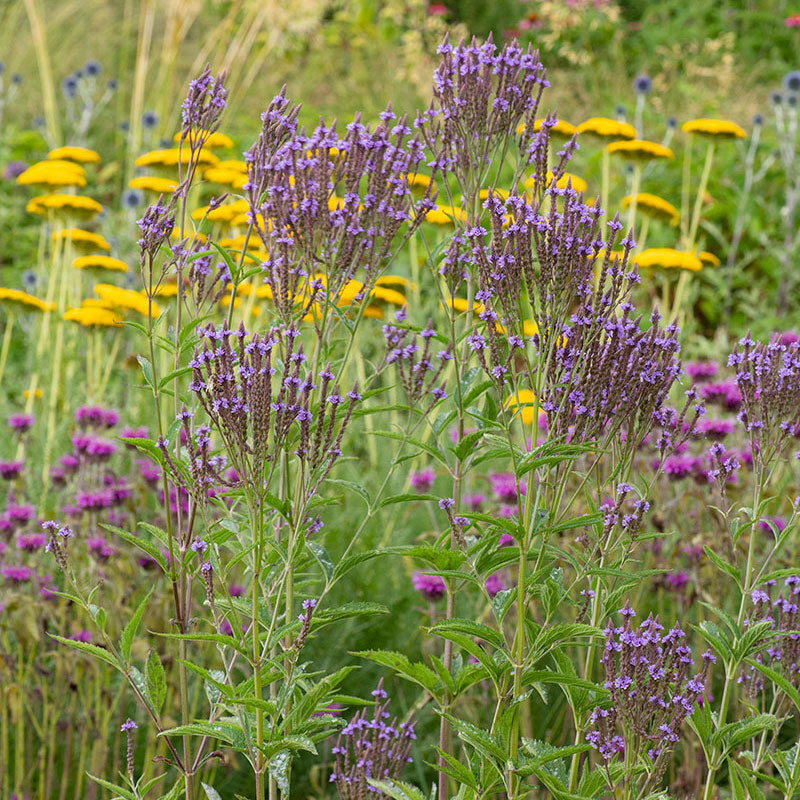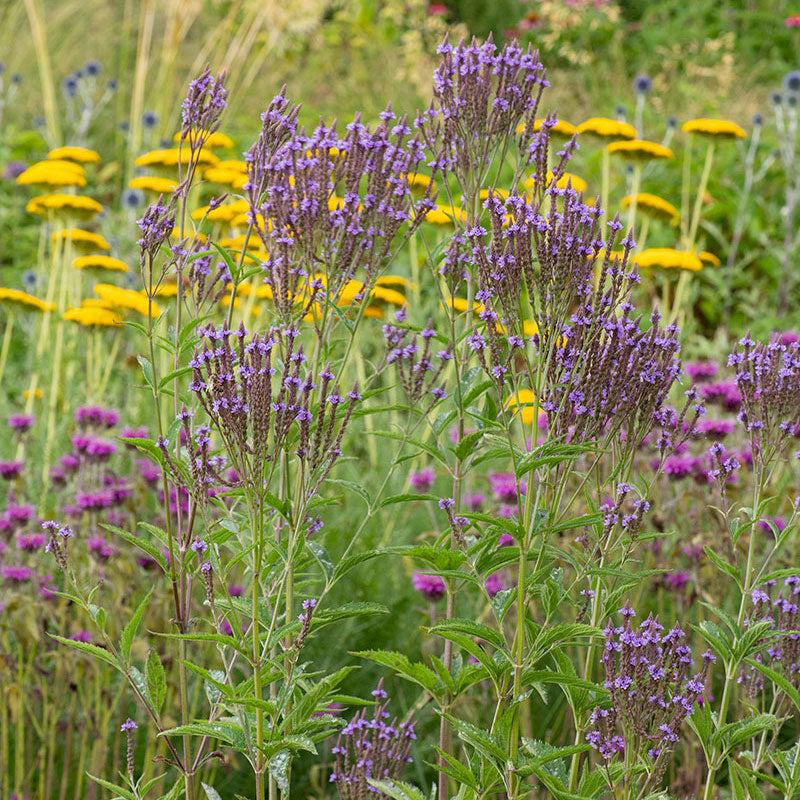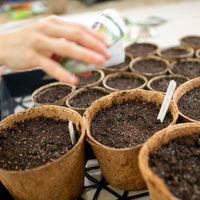SOWING INSTRUCTIONS
Depth:
Surface to just cover; requires light to germinate.
Starting Indoors:
Stratify for 30 days. Sow in a container, cover with a plastic bag and refrigerate, or mix seed with damp clean sand or vermiculite, bag, and refrigerate at 35-40F. Check often for germination and maintain a lightly moist medium. Transplant any seedlings as they germinate. After the chill period, sow into soilless media and keep at 60-70F.
Starting Outdoors:
Direct sow in fall or earliest spring, or wintersow into pots in the shade, covered with a thin layer of clean sand and a wire screen to keep out mice and voles. Check for water, keeping evenly moist.
PLACEMENT & CULTIVATION
Native to most of the USA, blue vervain's branched spikes of purple contrast wonderfully with all those daisies of summer and fall, especially useful in masses with other moisture-loving natives, such as bee balm, swamp milkweed, and sweet coneflower. Best in the wild garden as it runs and self-sows to beautiful effect. A plant host to the caterpillars of the verbena moth, it is also a magnet for bumblebees, specialist bees and beneficial insects.
Watering Details:
Keep moist; tolerates wet settings
Soil pH:
Slightly acid to alkaline
Fertilizer:
If soil is especially poor, add a couple of inches of compost prior to planting and top-dress in the spring yearly thereafter.
When to Cut for Bouquets:
As desired—florets open a few at a time

































